Lifting Equipment for Your Needs
Date Posted:27 June 2024
By assessing requirements, understanding equipment types, considering safety features, evaluating operating conditions, factoring in maintenance, and budgeting accordingly, businesses can make informed decisions that maximize the value of their investment
In industrial settings, the right lifting equipment can make all the difference in productivity, safety, and efficiency. Whether you're lifting heavy loads in a warehouse, hoisting materials on a construction site, or handling goods in a manufacturing facility, selecting the appropriate lifting equipment is crucial. In this comprehensive guide, we'll walk you through the key factors to consider when choosing the right lifting equipment for your specific needs.
Assess Your Requirements
The first step in choosing the right lifting equipment is to assess your requirements. Consider factors such as the weight and dimensions of the loads you'll be lifting, the height and reach required, the frequency of use, and the environment in which the equipment will operate. By understanding your specific lifting needs, you can narrow down your options and focus on equipment that meets your requirements.
Understand Different Types of Lifting Equipment
Lifting equipment comes in a variety of types, each designed for specific lifting tasks and environments. Common types of lifting equipment include:
- Forklifts: Ideal for lifting and transporting heavy palletized loads in warehouses and distribution centers.
- Cranes: Suitable for lifting and moving heavy materials in construction, manufacturing, and industrial settings.
- Hoists: Used for lifting and lowering loads vertically, often in conjunction with overhead cranes or gantry systems.
- Pallet jacks: Designed for moving palletized loads over short distances in warehouses and retail environments.
Understanding the capabilities and limitations of each type of lifting equipment will help you make an informed decision based on your specific needs.
Consider Safety Features
Safety should be a top priority when choosing lifting equipment. Look for equipment that is equipped with advanced safety features such as:
- Load sensors: To prevent overloading and ensure safe lifting.
- Stability controls: To maintain balance and prevent tipping.
- Emergency stop mechanisms: To halt operations in case of emergencies.
Investing in equipment with robust safety features will help minimize the risk of accidents and injuries in the workplace.
Evaluate Operating Conditions
Consider the operating conditions in which the lifting equipment will be used. Factors such as indoor or outdoor use, temperature extremes, hazardous environments, and space constraints can impact the suitability of certain types of lifting equipment. Choose equipment that is designed to withstand the specific conditions of your workplace to ensure optimal performance and longevity.
Factor in Maintenance and Support
Maintenance is an essential aspect of owning lifting equipment. Choose equipment that is easy to maintain and service, with readily available replacement parts and support from the manufacturer or supplier. Regular maintenance and servicing will prolong the lifespan of your equipment and ensure continued reliability and safety.
Budget Considerations
Finally, consider your budget when choosing lifting equipment. While it's important to invest in high-quality equipment that meets your needs and prioritizes safety, you also need to ensure that it aligns with your budgetary constraints. Compare prices from different suppliers, consider leasing options, and weigh the long-term costs of ownership to make an informed decision that fits your budget.
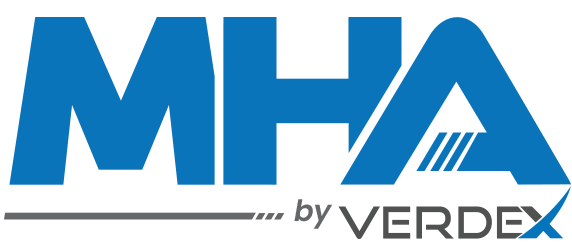
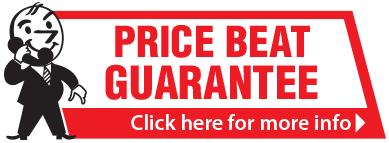
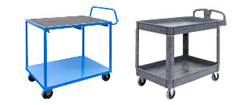

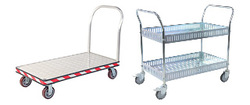
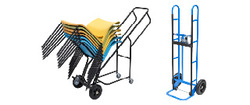
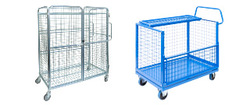
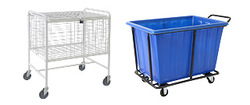
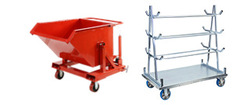
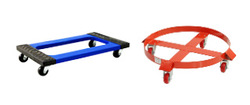
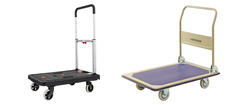
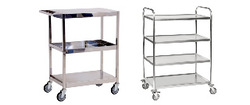
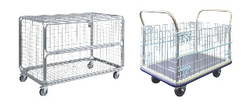
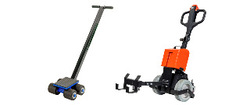
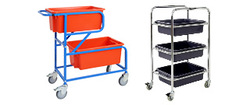
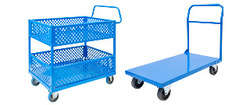
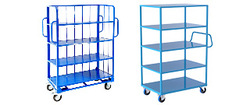
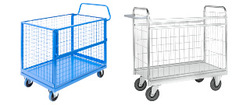
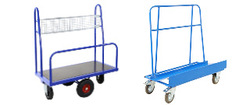
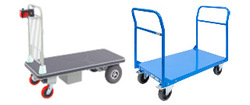
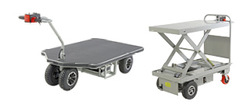
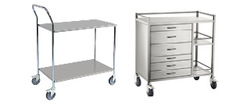
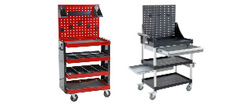
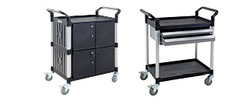
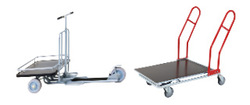
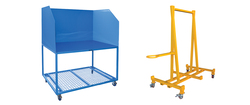



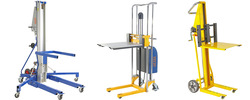



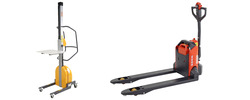
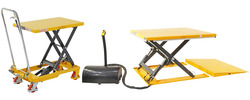
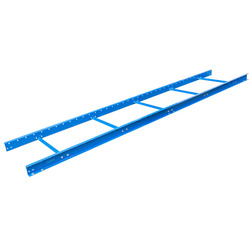
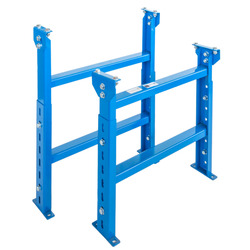
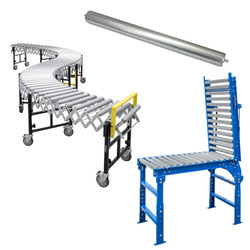
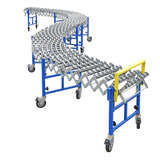



















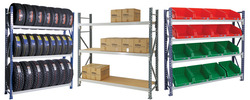
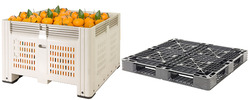
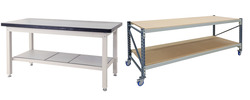
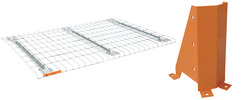
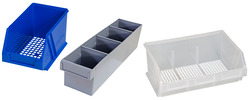

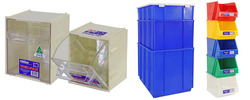

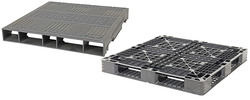
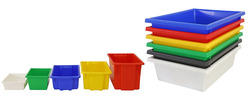
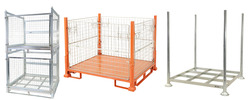
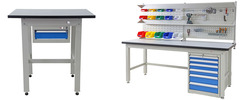
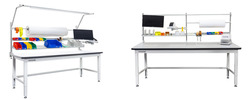

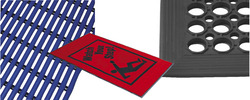
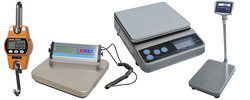



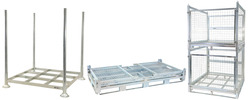
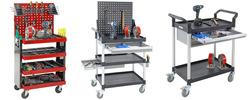
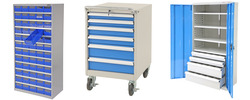
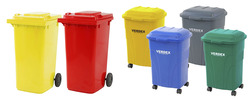
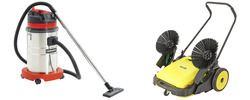





































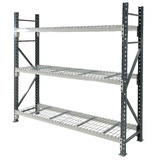















 Trolleys / Hand Trucks
Trolleys / Hand Trucks 2 Tier Trolleys
2 Tier Trolleys 3 Tier Trolleys
3 Tier Trolleys Aluminium Trolleys
Aluminium Trolleys Appliance & Hand Trucks
Appliance & Hand Trucks Cage Trolleys
Cage Trolleys Cleaning Carts & Trolleys
Cleaning Carts & Trolleys Construction Trolleys
Construction Trolleys Dollies
Dollies Foldable Trolleys
Foldable Trolleys Hospital Trolleys
Hospital Trolleys Laundry/Linen Trolleys
Laundry/Linen Trolleys Load Skates & Tow Tugs
Load Skates & Tow Tugs Mail / Office Trolleys
Mail / Office Trolleys Multi Purpose Trolleys
Multi Purpose Trolleys Multi-Tier Shelf Trolleys
Multi-Tier Shelf Trolleys Order Picking Trolleys
Order Picking Trolleys Panel Cart Trolleys
Panel Cart Trolleys Platform Trolleys
Platform Trolleys Powered Trolleys
Powered Trolleys Stainless Steel Trolleys
Stainless Steel Trolleys Tool Trolleys
Tool Trolleys Utility Carts
Utility Carts Warehouse Trolleys
Warehouse Trolleys Custom Trolleys
Custom Trolleys Lifting Equipment
Lifting Equipment Forklift Attachments
Forklift Attachments Jib Attachments
Jib Attachments Lifting Hoists & Pallet Hooks
Lifting Hoists & Pallet Hooks Manual Stackers & Lifters
Manual Stackers & Lifters Pallet Jacks
Pallet Jacks Pallet Lifters
Pallet Lifters Pallet Rotators & Dispenser
Pallet Rotators & Dispenser Powered Pallet Trucks & Electric Lifters
Powered Pallet Trucks & Electric Lifters Scissor Lift Trolleys and Tables
Scissor Lift Trolleys and Tables Conveyor Equipment
Conveyor Equipment Conveyor Frames
Conveyor Frames Conveyor Stands
Conveyor Stands Roller Conveyors
Roller Conveyors Skate Wheel Conveyors
Skate Wheel Conveyors Access Equipment
Access Equipment Container & Yard Ramps
Container & Yard Ramps Step Stools & Ladders
Step Stools & Ladders Work Platforms & Crane Cages
Work Platforms & Crane Cages Drum Handling
Drum Handling Drum Storage & Bunding
Drum Storage & Bunding Drum Trolleys & Lifters
Drum Trolleys & Lifters Forklift Drum Handling
Forklift Drum Handling Containment & Spillage
Containment & Spillage Aerosol Cans Storage Cages
Aerosol Cans Storage Cages Bunded Pallets & Storage
Bunded Pallets & Storage Corrosive Goods Storage Cabinets
Corrosive Goods Storage Cabinets Flammable Liquid Cabinets
Flammable Liquid Cabinets Forklift Gas Storage Cages
Forklift Gas Storage Cages Gas Cylinder Storage
Gas Cylinder Storage Site Storage
Site Storage Spill Kits
Spill Kits Stillage Cages
Stillage Cages Waste Handling
Waste Handling Bin Lifters & Tippers
Bin Lifters & Tippers Plastic Waste Bins and Carts
Plastic Waste Bins and Carts Steel Waste and Tipping Bins
Steel Waste and Tipping Bins Storage Equipment
Storage Equipment Heavy Duty Cabinets & Benches
Heavy Duty Cabinets & Benches Heavy Duty Shelving
Heavy Duty Shelving Mega Bins & Pallets
Mega Bins & Pallets Packing Benches
Packing Benches Pallet Racking Accessories
Pallet Racking Accessories Parts Trays & Stor-Pak Bins
Parts Trays & Stor-Pak Bins Pegboard & Louvre Panels
Pegboard & Louvre Panels Plastic Bins
Plastic Bins Plastic Handling Solutions Bins
Plastic Handling Solutions Bins Plastic Pallets
Plastic Pallets Stack & Nest Bins
Stack & Nest Bins Storage Cages
Storage Cages Workplace Equipment
Workplace Equipment Workbenches
Workbenches Modular Workbenches
Modular Workbenches Electric Height-Adjustable Workbenches
Electric Height-Adjustable Workbenches Floor Matting
Floor Matting Industrial Weighing Scales
Industrial Weighing Scales Pallet Wrapping & Packaging Machinery
Pallet Wrapping & Packaging Machinery Ramps
Ramps Stationery Cupboards
Stationery Cupboards Storage and Stillage Cages
Storage and Stillage Cages Tool Trolleys
Tool Trolleys Tooling Cabinets
Tooling Cabinets Wheelie Bins
Wheelie Bins Workshop Equipment
Workshop Equipment Safety Equipment
Safety Equipment Gloves and PPE
Gloves and PPE Pallet Rack Post Protectors
Pallet Rack Post Protectors Safety Barriers & Bollards
Safety Barriers & Bollards Safety Knives & Cutters
Safety Knives & Cutters Signs and Traffic Supplies
Signs and Traffic Supplies Tool & First Aid Boxes
Tool & First Aid Boxes Construction Equipment
Construction Equipment Concrete Equipment
Concrete Equipment General Site Equipment
General Site Equipment Lifting Equipment
Lifting Equipment Site Storage
Site Storage Waste
Waste  MHA's Specials
MHA's Specials











